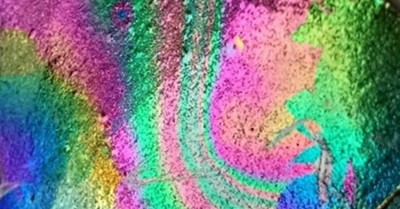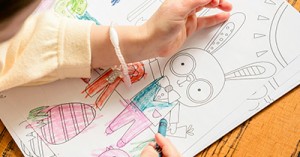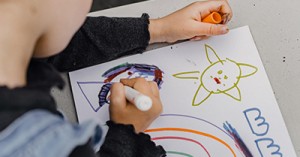Using nail polish, this science experiment will enable you to create rainbow patterns on paper.
Materials Needed:
- A bowl filled with water
- Clear nail polish
- Rectangles of black cardboard paper.
- Paper towels
What to do:
- Add one small drop of clear nail polish to the bowl of water.
- Wait 5 seconds.
- Dip the black cardboard into the bowl of water.
- Slowly pull it out.
- Place on the paper towel to dry.
- Once the paper is dry (few seconds) tilt the paper in different directions to see the rainbow patterns.
The Science Factor:
When you dip the paper into the water it gets coated with a thin layer of nail polish. The rainbow colours you see are caused by thin-film interference
Hints and Tips:
- Another method - Place the black paper in the bowl of water. Add one drop of clear nail polish on top of the black paper. Once the nail polish spreads on the surface remove the black paper from the bowl of water and let it dry.
- Cut the paper into different shapes eg create hearts for cards.
- For concerns regarding the nail polish smells do this experiment in a well ventilated area or outside.
Reference:
Rainbow Paper - Colour Science for Kids, Science Kiddos







